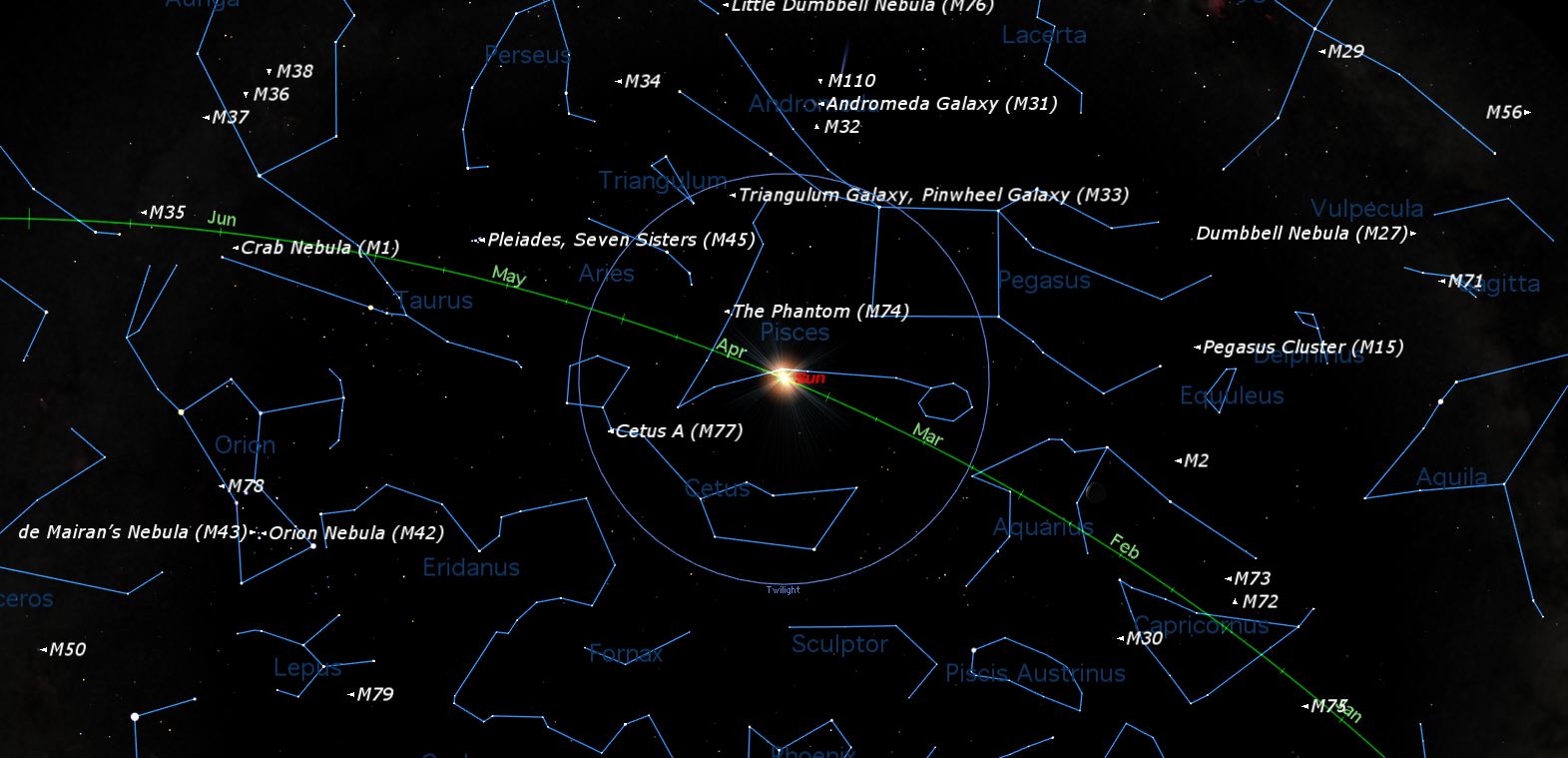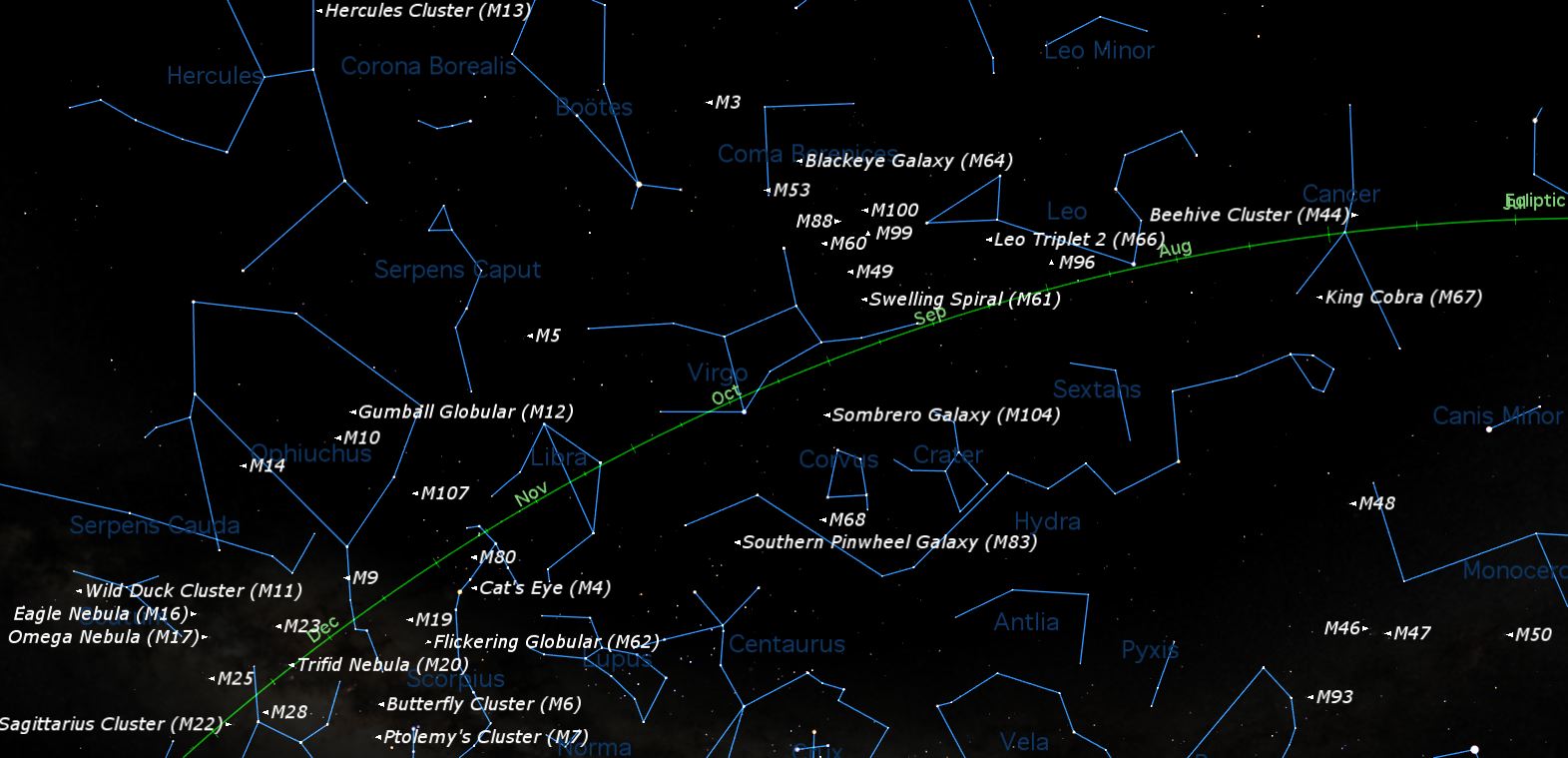Spot 100 Deep-Sky Objects This Weekend in 'Messier Marathon'

Every spring, amateur astronomers around the world take on the challenge of trying to observe all 110 objects in Charles Messier's storied catalog of deep-sky objects in a single night.
Because of the way the objects are distributed across the night sky, the best opportunity to see all 110 usually falls on the first moonless night in March. This year, observing weather was poor over much of North America on that date. This coming weekend, however, offers a chance to see most (but not all) of the Messiers, and under slightly warmer, more comfortable conditions.
Those of you not already planning a Messier hunt may want to know: What are the Messier objects, and why would anyone want to observe them?
Charles Messier was an 18th-century French astronomer whose main interest was in discovering comets. He would sweep the sky at dawn and dusk every night looking for these icy wanderers. [Amazing Comet Photos of 2013 by Stargazers]
Messier was often confused by objects that looked like cometsbut were permanent inhabitants of the sky. He compiled a catalog of these bodies, not knowing what they really were. Nowadays we recognize his catalog as the first listing of deep-sky objects: star clusters, nebulae and galaxies.
Messier's catalog of comet lookalikes, it turns out, is a wonderful collection of the brightest and best deep-sky objects.
Back in the 1940s, Canadian amateur astronomer Isabel Williamson was looking for ways to encourage armchair astronomers to get out and use their telescopes. She got the idea of a club whose members would compete to see who would be the first to observe all the objects in Messier's catalog, and the first Messier Club was born.
Breaking space news, the latest updates on rocket launches, skywatching events and more!
The objects in Messier’s catalog are scattered over the entire sky visible in the Northern Hemisphere, so they help beginners become familiar with the constellations. Some of the objects were faint enough to be a serious challenge to the amateur small telescopes of the mid-20th century, mostly 3-inch refractors and 6-inch reflectors.
With the small telescopes and poor star atlases back then, it often took observers many years to observe all of the objects. To those of us who struggled with Messier hunting in those days, it seems almost unbelievable that anyone could manage to see them all in a single night, yet that is what many amateurs attempt to do every March. This idea of a running a “Messier Marathon” originated in 1979 with another comet hunter, Californian Don Machholz.
Because of the way the objects are distributed across the sky, there is a fairly large gap between western Aquarius and eastern Pisces. When the sun is located in the middle of that gap in early March, it is possible for observers in the southern United States to see all 110 objects in a single night.
If you miss this critical window, you will lose some objects to evening twilight, but you will have a better chance to observe the early morning objects. The farther north you are located, the fewer objects you will be able to see.
Bagging a large number of deep-sky objects in a single night requires both organizational and observing skills. Observers argue about the optimum order in which to tackle the objects. Anyone who has spent much time observing deep-sky objects will know that it often takes a long time to find even a single object, so seeing over 100 in a night requires a lot of skill and practice.
Despite the difficulties, spotting even some of these objects is a treat, so I encourage everyone to at least try to see how many you can see in one night. This weekend, it should be possible to see more than 100 Messiers. Only M33 in Triangulum, M74 in Pisces, and M77 in Aries will be lost in twilight.
I've never seen them all in one night myself. In fact, it took me two years to graduate from that original Messier Club back in 1959. I was only the fourth person to do so, making me one of the very first people in the world since Charles Messier himself to see all the Messiers.
This article was provided to SPACE.com by Starry Night Education, the leader in space science curriculum solutions. Follow Starry Night on Twitter @StarryNightEdu.
Follow us @Spacedotcom, Facebook or Google+. Originally published on SPACE.com.

Geoff Gaherty was Space.com's Night Sky columnist and in partnership with Starry Night software and a dedicated amateur astronomer who sought to share the wonders of the night sky with the world. Based in Canada, Geoff studied mathematics and physics at McGill University and earned a Ph.D. in anthropology from the University of Toronto, all while pursuing a passion for the night sky and serving as an astronomy communicator. He credited a partial solar eclipse observed in 1946 (at age 5) and his 1957 sighting of the Comet Arend-Roland as a teenager for sparking his interest in amateur astronomy. In 2008, Geoff won the Chant Medal from the Royal Astronomical Society of Canada, an award given to a Canadian amateur astronomer in recognition of their lifetime achievements. Sadly, Geoff passed away July 7, 2016 due to complications from a kidney transplant, but his legacy continues at Starry Night.


